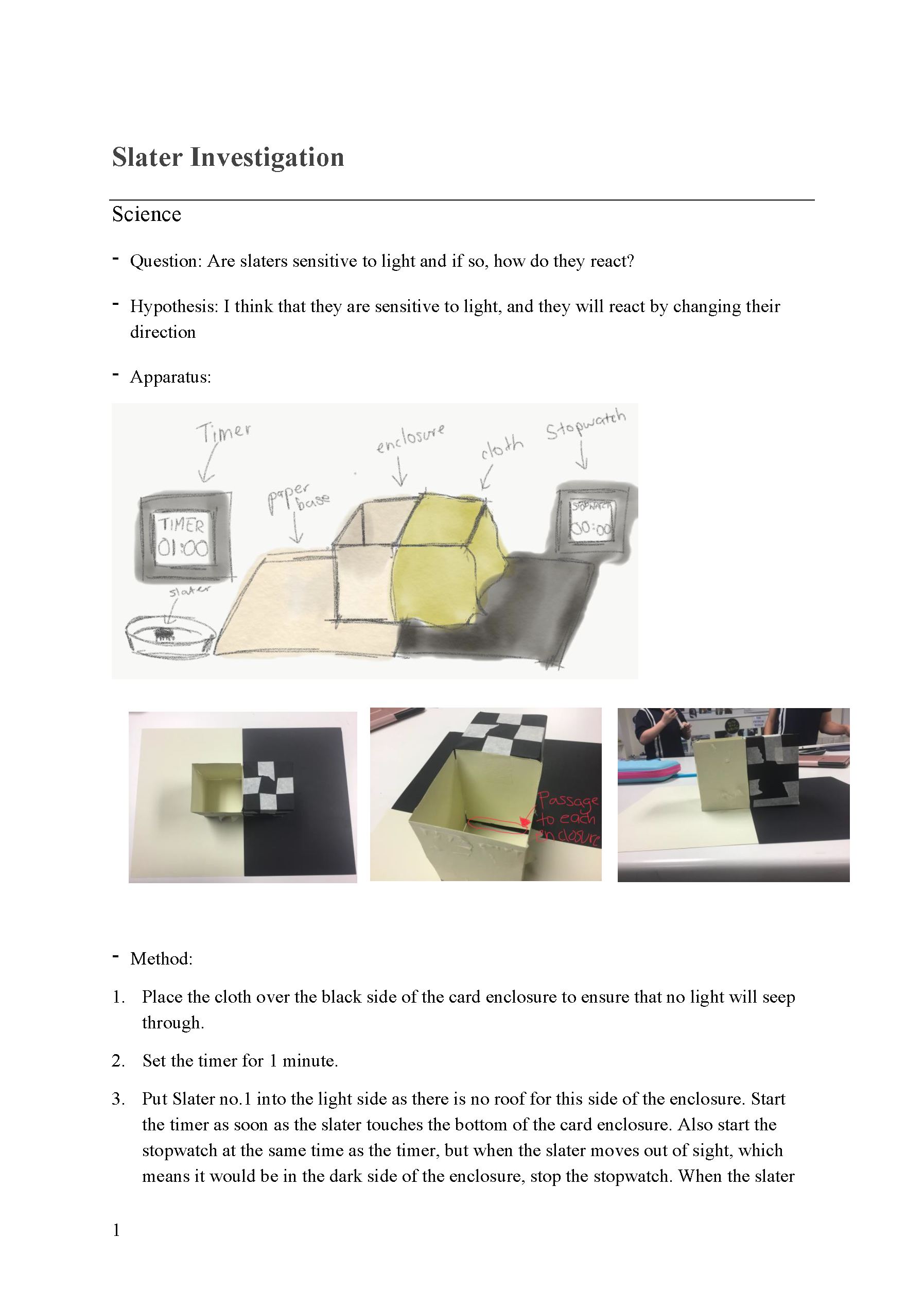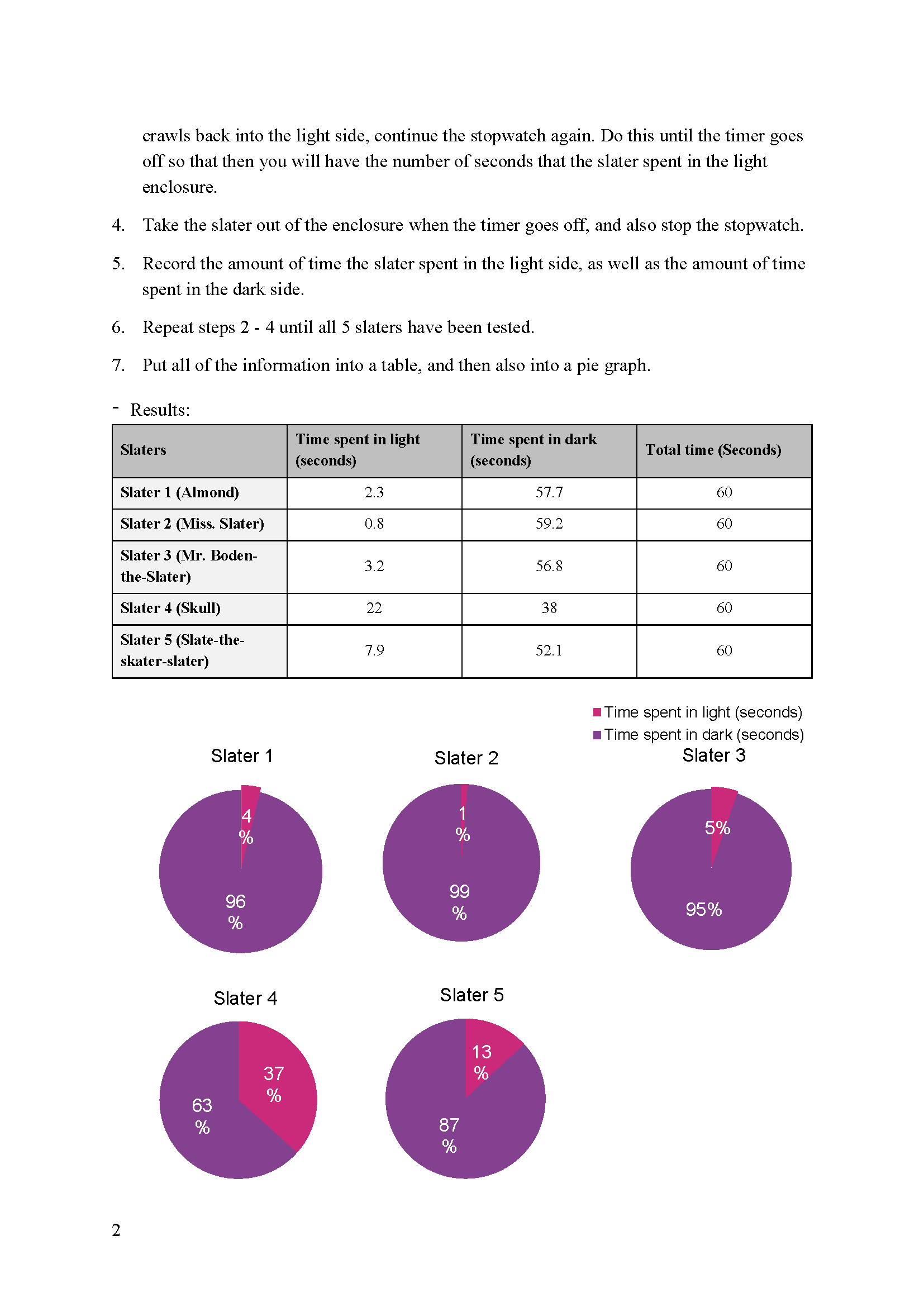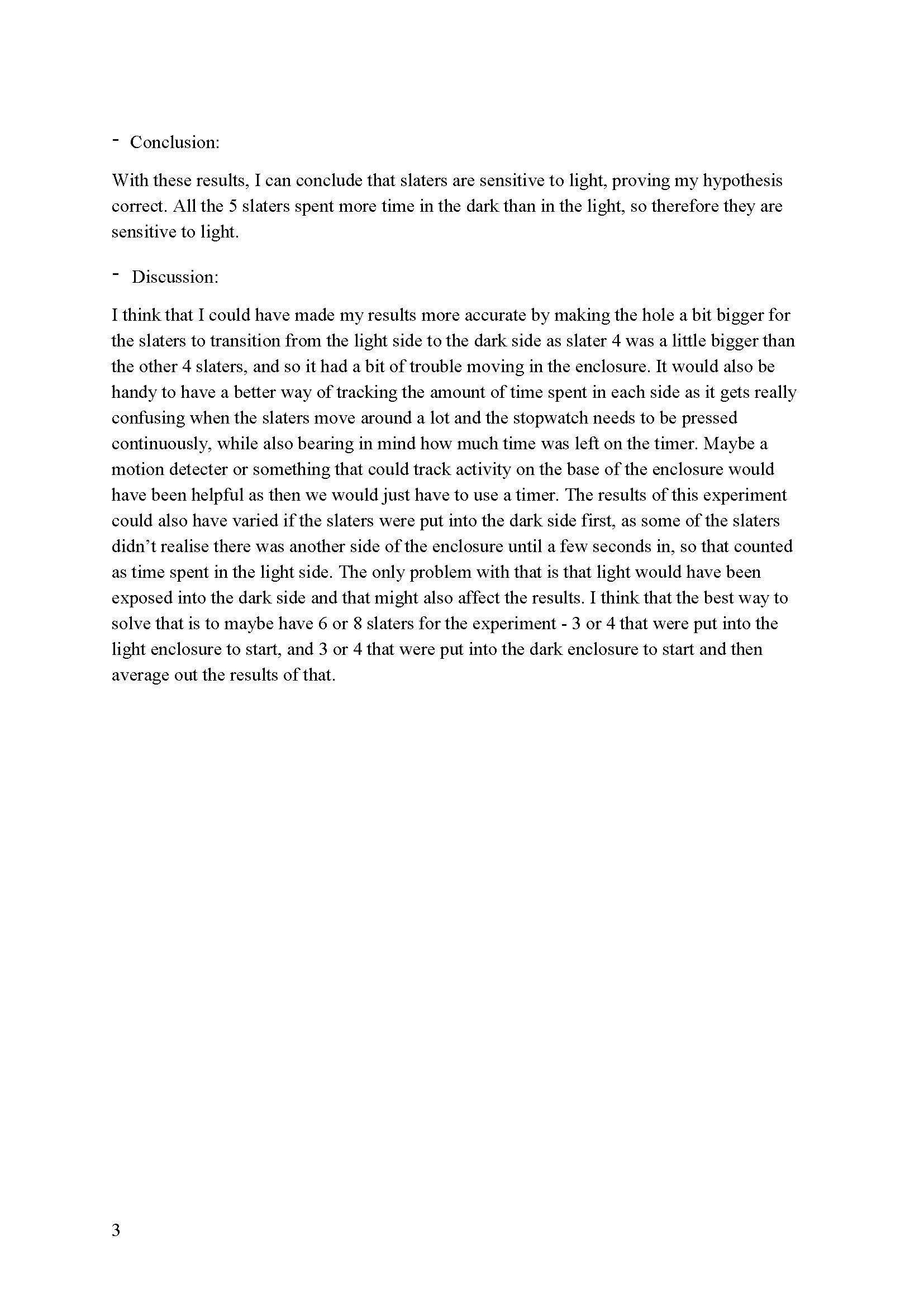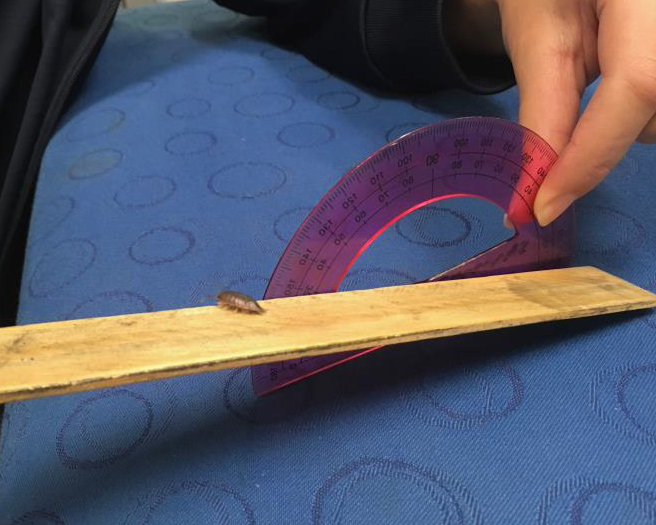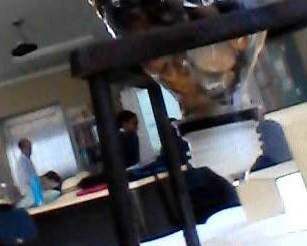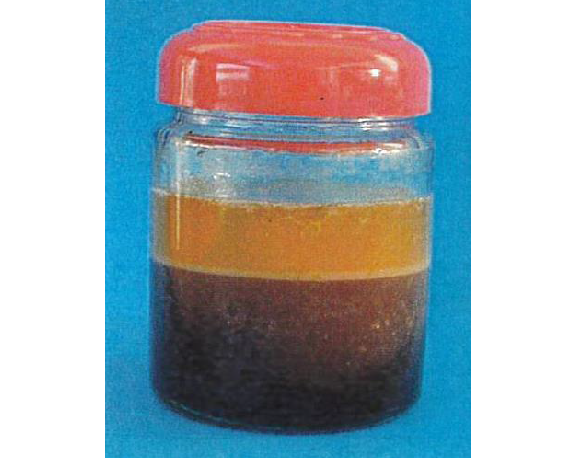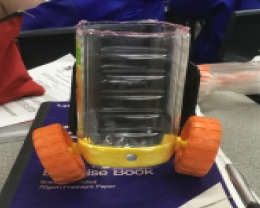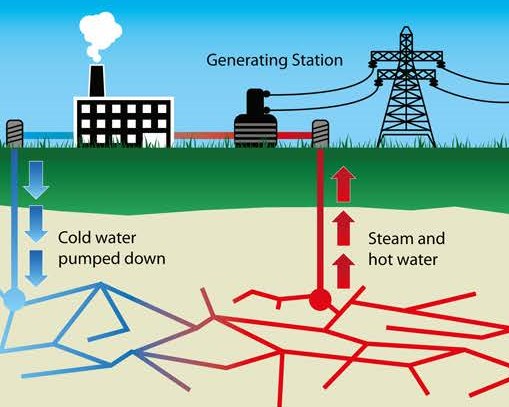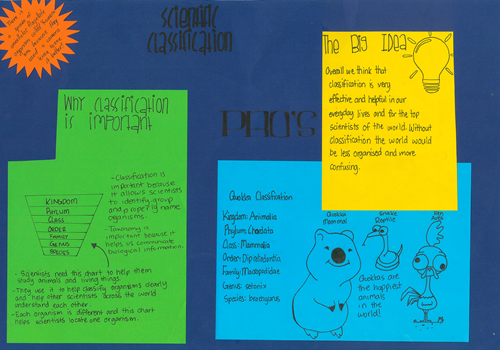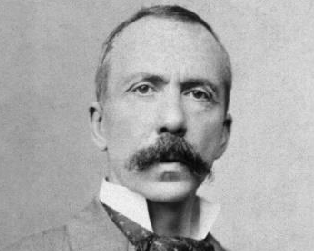Slater investigation
Summary of task
In previous teaching and learning units, students learnt about the scientific method and conducted investigations, wrote reports and reflected on their investigations. During a teaching and learning unit on biological sciences, students practiced identifying and formulating questions about the living world. They were asked to determine if and how these questions could be answered, that is, by research, observation, experimentation, or not at all. In the last case, students were challenged to identify reasons why the question could not be answered scientifically.
In this task, students were given the opportunity to conduct an investigation that encompassed all stages of the scientific method. After observing the behaviour of slaters, students were asked to identify and formulate a question that can be answered by experimentation. They were then asked to individually design and conduct the investigation to answer the question. Students were to collect data, write a report, reflect on the validity and accuracy of their results, and suggest how the investigation could be improved. No prior knowledge on slaters was assumed or required to successfully complete this task.
